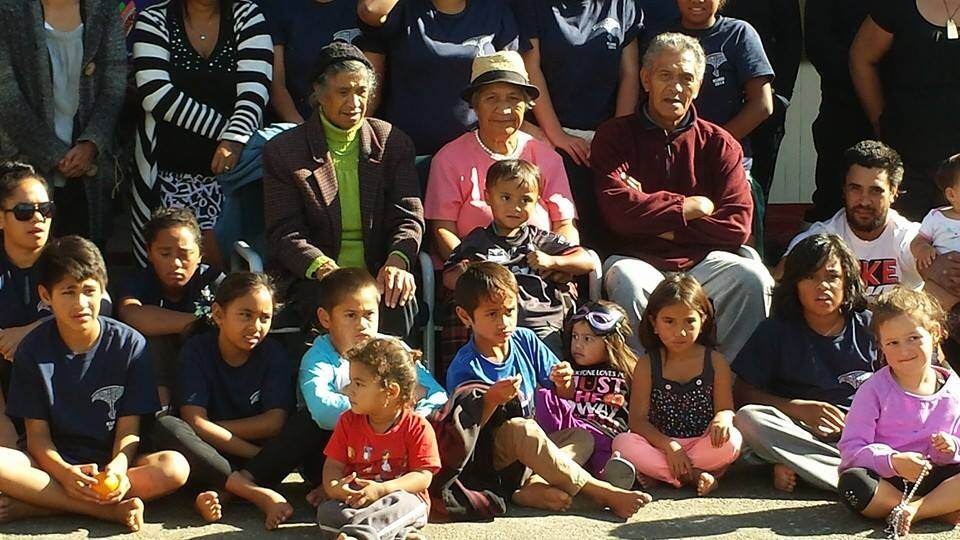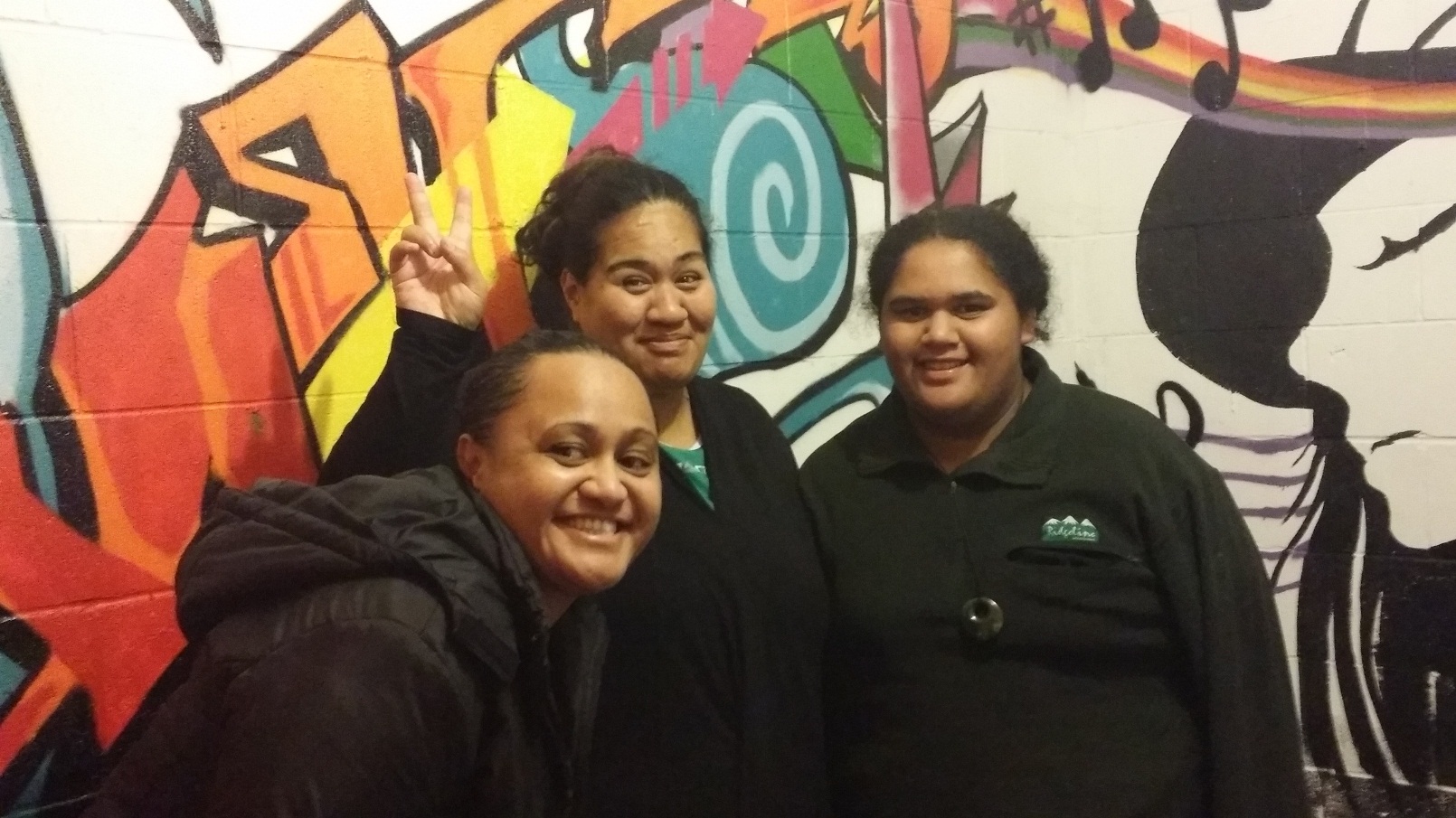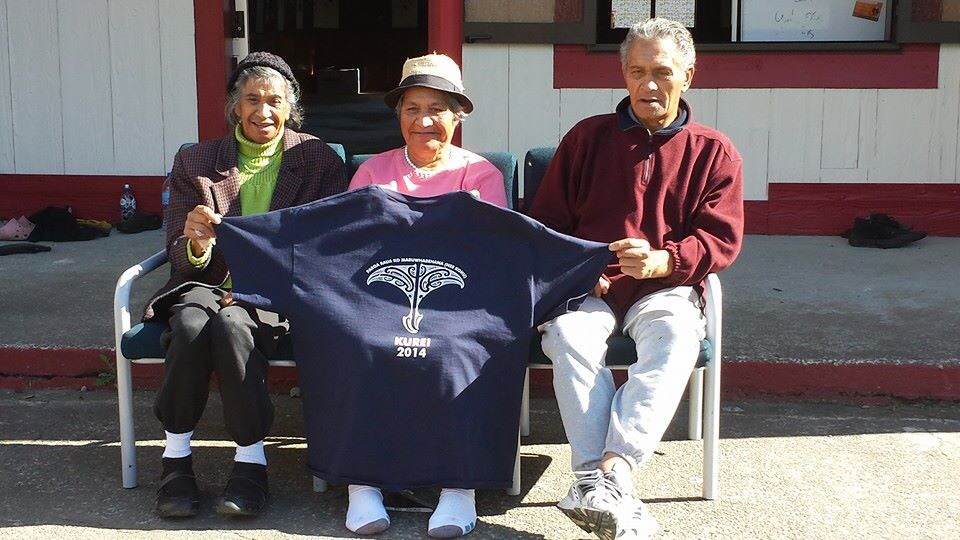More than 100 members of the Paroa Kurei whānau gathered at Opotiki marae over Easter 2014 to reconnect and strengthen existing relationships and share stories of their tīpuna.

There were government workers and gang members, forestry workers and farmers, mums, dads and rangatahi. They came from all walks of life to celebrate whānaungatanga – and E Tu Whānau was proud to be a part of it.
Paroa Kurei whāngai, Anau Apanui, and a couple of her uncles decided it was time to get the descendants of 19th century Ngāti Ira statesman, Paroa Kurei, together. They wanted to come together simply because they are whānau rather than for the usual reasons – a tangi or a party.
Empowering whānau through existing values
 A week later, Anau picked up a document explaining E Tu Whānau’s kaupapa.
A week later, Anau picked up a document explaining E Tu Whānau’s kaupapa.
“The timing was amazing. The E Tu Whānau Programme of Action talked about empowering whānau through the values that we as a whānau know exist. It talked about individuals stepping up, becoming kahukura and making positive change happen.
“I remember thinking, ‘man, this is what my uncles were talking about’, so I got excited, posted the idea on Facebook, tagged all my whānau and said, ‘let’s do it’!”
The response to Anau’s Facebook post was immediate and around 20 people turned up for the first of a series of hui to plan a hui. “We spoke to the strengths of our whānau and used the E Tu Whānau values as part of the kōrero.”
Anau talks about the aroha in their whānau. “One uncle said that he wanted his kids to know our whakapapa. Others talked about kōrero awhi and our tikanga and coming together based on whakapapa.”
Fantastic hui – “and oh boy, there was lots of aroha!”
 There were five planning hui in total and when the whānau finally came together at Easter, the results were fantastic.
There were five planning hui in total and when the whānau finally came together at Easter, the results were fantastic.
“We had forestry workers, people studying at university, uncles at home keeping the fires burning, and other uncles that are gang members. That was all respected because the important thing was us being together on our tīpuna’s main marae, the marae where he is buried.”
Julie Morunga said that she came away from the hui feeling lighter. “Now I know where I fit because I know how I’m connected.”
Briony Apanui said she also felt “complete”. “I felt really awesome and I can’t stop talking about it. I love wearing our t-shirts and telling people how we organised it and how much we enjoyed ourselves. The games and activities that we worked out between us were so much fun and we learnt so much at the same time like who was connected to who. And the aroha…oh boy, there was lots of aroha.”
Harlem Ahu, a great mokopuna of Paroa Kurei, drew a tohu which now adorns whānau t-shirts. Others worked together to compose and record a waiata using Paroa Kurei’s own words.
Hui inspires other whānau
 The idea is catching on and interest in running their own hui is high amongst other branches of the Paroa Kurei whānau and other whānau in the district. Participants in the Easter hui are often asked to talk about the experience and share tips on how to run similar hui.
The idea is catching on and interest in running their own hui is high amongst other branches of the Paroa Kurei whānau and other whānau in the district. Participants in the Easter hui are often asked to talk about the experience and share tips on how to run similar hui.
Nanny Oke is one of Paroa Kurei’s six children. Of the five daughters and one son, two daughters have passed on. Okeroa was raised (whangai) by Paroa Kurei and Maruwhare Kohu-Kurei. She ws delighted with the success of the hui.
“It was a beautiful wānanga. Dad was a man who worked at the back as well as the front of a marae, and being able to remember and share stories about him with new generations was lovely. I would encourage other whānau to do something like it.”
The Easter wānanga was just the beginning, and the whānau are determined to keep the connections strong.
As Anau says, “We do have a history and we do have a story, and only we can make sure we stay connected and keep ourselves healthy and strong.”
